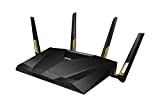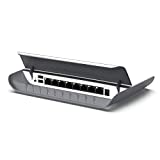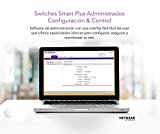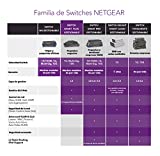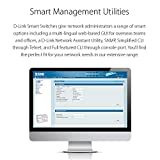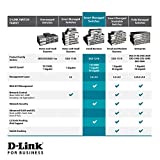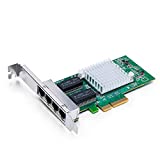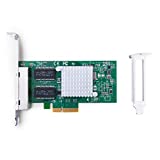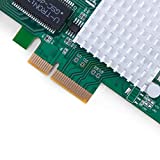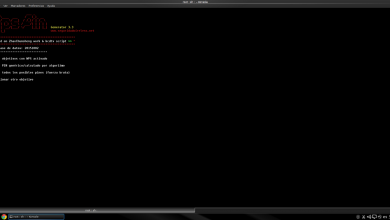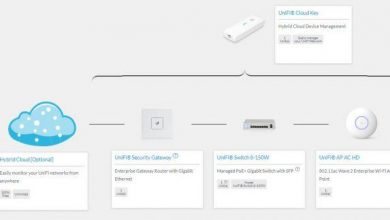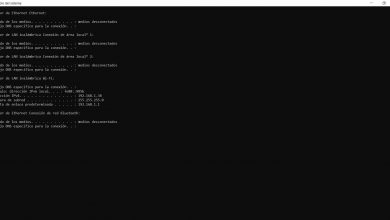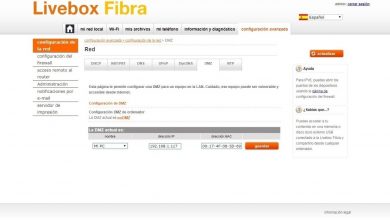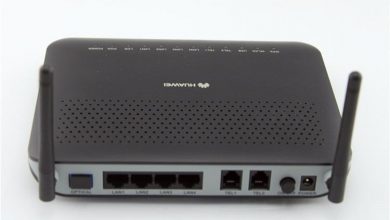Link Aggregation: what it is, how it works and why your NAS or PC should have it

Today, most of us have very high speed fiber optic connections: 300 Mbps, 600 Mbps… and even some connections that work up to 1 Gbps. On many occasions the network connection to our PC or NAS becomes a bottleneck if we are making intensive use of the local network. To solve this problem there is Link Aggregation, a technology that will allow us to “join” several physical links, in a single logical link, to have speeds of 2Gbps or more.
What is Link Aggregation and what is it for?
Link Aggregation is a very interesting feature that includes network cards with two ports, and also NAS servers that have two or more Gigabit Ethernet ports. Link Aggregation allows us to combine two or more physical links (either Fast-Ethernet, Gigabit Ethernet and even 10Gigabit) so that we can expand the bandwidth of the connection. If, for example, we join two cables at 1Gbps, we will have a throughput of up to 2Gbps.
This technique can be useful to join a router with a switch, or two switches, so that the connection, at least locally, is as fast as possible, something very important if we usually share files and resources over the local network. Thanks to this technology, we can also have different network equipment, such as a NAS, connected with higher bandwidth.
Regardless of our Internet connection, if we have a NAS connected to the local network through a single Gigabit Ethernet cable, the maximum speed at which we can copy files, or download them to our computer, will be 1 Gbps, about 110 MB / s approximately . This can cause that, if several user users enter the NAS at the same time, the bandwidth of the Gigabit Ethernet connection is divided between them, and they will not be able to squeeze the most of the hardware of modern NAS. The same can happen with a very powerful computer connected to a local network that shares files with other users on the LAN. If our computer is limited by the Gigabit Ethernet port of the network card, it is most likely that if other computers on the network try to access our shared resources, we will easily run out of bandwidth and will have to divide the speed between them.
Link Aggregation is a standard that is currently available in all manageable switches and in most operating systems and NAS servers, however, for this function to work correctly, it is necessary to meet certain requirements regarding the configuration of both, three or more links that we are going to “join” in a single logical link:
- All the links that are part of the Link Aggregation must always be Full-Duplex.
- The synchronization speed of all the links must be exactly the same, if you synchronize a link at 1Gbps, they must all synchronize at this speed.
- If we are configuring Link Aggregation on a managed switch, it is necessary that the VLAN configuration in the links be the same (either trunk, access mode or trunk with certain VLANs).
If any of these requirements are not met, the Link Aggregation cannot be successfully negotiated. A very important detail is that, when we configure a Link Aggregation and one of the links fails, the link that is still active will work without problems, in this way, we will not be left without a wired connection. Another important aspect is the Link Aggregation algorithms for load balancing, when we configure this in a high-end managed switch, we can choose the load balancing management algorithm, these algorithms can be the following:
- src-ip: check the source IP balancing the traffic depending on the source.
- src-mac: check the source MAC balancing the traffic depending on the source.
- dst-ip: check the destination IP balancing the traffic depending on the destination of the traffic.
- dst-mac: check the destination MAC by balancing the traffic depending on the destination of the traffic.
- src-dst-ip: checks both source and destination IP, and allows greater granularity so that the traffic is better balanced between the physical links.
- src-dst-mac: checks both source and destination MAC, and allows greater granularity so that the traffic is better balanced between the physical links.
- src-dst-ip-port: checks both the source and destination IP as well as the port (TCP or UDP) used, this algorithm is the one with the highest granularity.
As you have seen, Link Aggregation is a really interesting standard protocol, which will allow us to increase the bandwidth and provide us with failover of the wired connection.
Equipment that we can buy to set up our network with Link Aggregation
The first thing that we are going to need is that the network equipment is compatible with this technology. Not all routers support Link Aggregation, and neither are all switches. Most high-end routers will be compatible with this technology, having two Gigabit Ethernet ports dedicated to Link Aggregation.
You can visit some analysis of ASUS and NETGEAR routers that have dedicated ports to perform Link Aggregation:
- ASUS BRT-AC828 Dual WAN VPN AC2600
- ASUS RT-AC88U AC3100
- ASUS RT-AC5300 AC5300
- ASUS ROG Rapture GT-AC5300 AC5300
- ASUS RT-AX88U AX6000
- ASUS ROG Rapture GT-AX11000 AX11000
- NETGEAR Nighthawk AX8 RAX80 AX6000
- NETGEAR Nighthawk Pro Gaming XR700 AD7200
- NETGEAR R9000 Nighthawk X10 AD7200
Manageable switches the same, a good switch will allow us to perfectly manage our Link Aggregation connections , either to connect a PC or a NAS or to connect to the router and have a higher speed router-switch link. Some of the most recommended models for the home are the following:
- NETGEAR Nighthawk GS808E S8000
- NETGEAR Nighthawk GS810EMX SX10
- NETGEAR GS908E
- NETGEAR GC110P
If you want something more professional, you can always opt for the following models:

